In the third century BC, Rome, growing in strength, began a life and death struggle for supremacy in the Mediterranean. He was competing with a power that had been strengthening its influence there for centuries and was not going to give up easily. It was close, and the Romans would be brought to their knees. What made them ultimately successful?
"Never have more powerful states and peoples clashed with each other, never have these two warring parties had so much power and might ”- wrote the Roman historian Titus Livius on the threshold of our era. The words of the author of "The History of Rome from the Founding of the City" referred to the Second Punic War between Rome and Carthage in 218-201 BCE. .
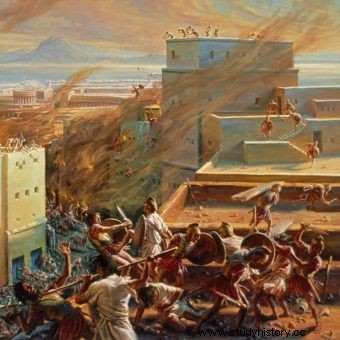
When she reached the peak of her power, she entered a series of wars with Rome that ended in the destruction of the city. Carthage was not an easy opponent, however.
The conflict described by the ancient chronicler was the culmination of a struggle between two powers lasting over a hundred years, from 265 to 146 BC. They aspired to play the first violins in the same region.
As Hubert Adamczyk, a researcher specializing in the history of Carthage, notes:
The area of the western Mediterranean was too small for two countries to exist side by side, one of which - Carthage - had controlled it for centuries, the other - Rome - was not satisfied with the rule over Italy and was looking for new opportunities in an attempt to overthrow the existing in the Mediterranean world favorable for Carthage relations.
The result of the rivalry, as noted by Titus Livius, could not be a foregone conclusion:"the luck of the war was so variable and the result of the battles so uneven that those who ultimately won the war were closer to losing." Indeed, there were many indications that Phoenician Carthage would become an empire. In the past, this city managed to convince Rome to recognize its interests in what is now Spain or in Sicily. For centuries, it also developed a powerful navy that reigned supreme in the Mediterranean Sea.
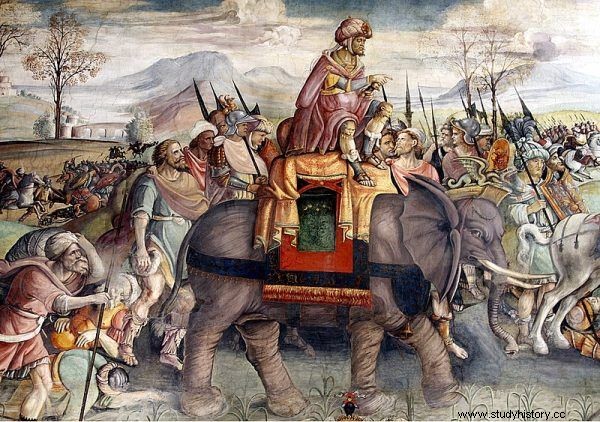
Originating in a Phoenician colony in North Africa, Carthage fiercely fought Rome for over a hundred years for economic and political influence in the Mediterranean. Image showing Hannibal's squad during the Second Punic War.
Ultimately, the African metropolis had to hand over the priority to its opponent from the north. Its defeat was total. In 146 BC it was completely destroyed, and the ground on which it stood was sprinkled with salt so that nothing else could grow on it. Rome has become the "capital of the world" and the "Eternal City". But why?
5. Carthage - conquests and colonization
At the beginning of the third century BC, the city founded by Romulus was only strengthening its position on the Apennine Peninsula. The force to be reckoned with came after the victory over Pyrrus, king of the Molosses, supporting the Greek colony, Taranto, in the fight against its ambitious neighbor. The importance of Rome, however, remained local and limited to Italy.
Carthage, (Phoenician Kart Hadasht , i.e. the New Town) was founded probably in the middle of the 8th century. In the 6th century BC, after the fall of Tire, the metropolis took over the initiative in the Mediterranean region, managed to extend its influence over a much larger area. She interfered with the internal affairs of Sicily and Sardinia many times. Trade with these islands was of great importance to its economy.
The thriving city also took control of a large part of the Phoenician colonies on the western part of the Mediterranean coast. In addition, their own commercial centers were established, including in Ibiza. The Carthaginian expansion became so intense that it managed to stop the Greek colonization of these territories .
While Carthage's influence in North Africa and the region as a whole is noticeable, the power it had over its "subordinate" territories was not formalized. As historian Richard Miles emphasizes, Carthage " did not exercise any direct political control over the lands of the old Phoenician diaspora ". Its model of domination was only slightly different from the earlier Greek migration. It was probably based primarily on trade contacts, occasional armed interventions and a network of international agreements in favor of it.
The hegemony built in this way was opposed by Rome to much more radical solutions. The existing state was enlarging the territories conquered by the Eternal City. A whole series of dependencies were built, including the regular collection of taxes from new lands (which, as far as we know, Carthage did not do). As a result, the candidate for the title of an empire grew in strength, gaining more and more new resources, including land and population. When the war came this advantage was decisive.
4. Trade or agriculture?
While the Carthaginians were not entirely without agricultural resources, international trade has undoubtedly become their main source of income. It was to him that the activities of the city were subordinated. It is not without reason that its regime is sometimes referred to as the "mercantile aristocracy." Trade was also developed by keeping a large fleet, operated by a well-trained crew.
Since the wealth of the city was based on the free movement of goods between friendly trade centers, Carthage, whose possessions were scattered, depended on the tranquility of the Mediterranean. Its absence could quickly destroy the hegemony of the metropolis . The Romans knew it well and, as historian Józef Wolski noted, already in 310 BCE they established a college overseeing the construction of the fleet. They demanded the supply of ships from their allies as well.
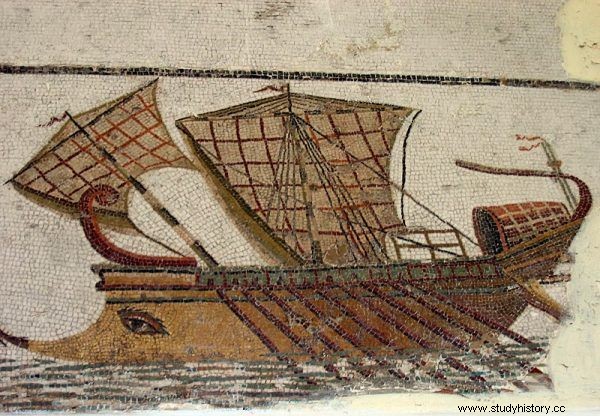
To defeat the Carthaginians, the Romans decided to create their own fleet. The illustration shows a Roman ship called trireme (Latin trireme).
Anyway, as the Polish scientist emphasizes, Rome's economy, although apparently more modest, because it was based on agricultural and mining and craft production, was in no way inferior to that of Carthage. In the event of a conflict, it was even safer, because only the military intervention of foreign troops in Italy posed a tangible risk. The hundred-year-old conflict, which only threatened Roman territory during open wars, in principle hit the African empire harder.
3. Citizens
The Romans, however, not only won the loyalty of their new subjects by force. Their attitude towards the people of the dependent lands clearly distinguished them from the Carthaginians. The inhabitants of an African city were reluctant to share their privileges. They were reserved, apart from themselves, only for Phoenician communities. As a result, their expansion did not translate into an increase in the number of Punic citizens. The controlled peoples were not given any political rights.
The rivals of the African city took a completely different strategy. This is how the author of the work "The Fall of Carthage", Adrian Goldsworthy describes it:
Rome's willingness to expand its citizenry was unique in the ancient world and one of the major factors in the eventual victory [Of Rome - ed. A.W.]. […] Rome's talent was that it was able to absorb others and make them loyal to it.
Arrangements from 338 BC [BC] A.W.] extended full citizenship to communities that did not speak Latin. The "allied cities" lost their political independence, although they still managed their internal affairs, but in return gained benefits for their relationship with Rome.
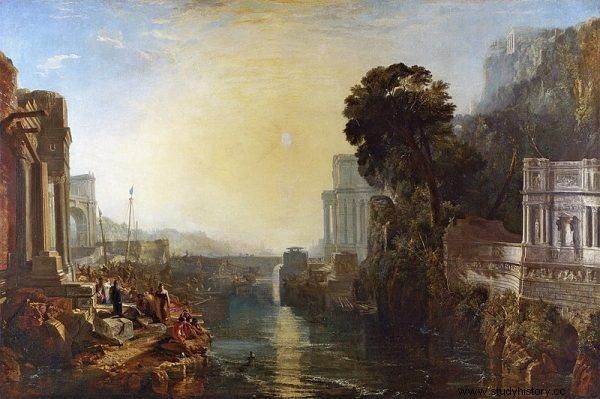
Carthage was an oligarchic republic, ruled by aristocratic families (e.g. the Barkas family). The subordinate peoples were not granted equal political rights. Turner's painting "Rise of the Carthaginian Empire."
There is no doubt that such actions contributed to the success of Rome in the long run. Especially since the new citizens were also obliged to fight in the wars fought by the "new homeland".
2. Kartagina - Army
The solution of putting one's own citizens under arms was not universally accepted in the ancient world. Both the Greeks and Phoenicians, including the Carthaginians, preferred to use mercenary troops. It resulted from a simple calculation. Since the citizens were few, their lives were reluctantly distributed. With an ever-expanding group of full-fledged inhabitants, Rome did not have this dilemma. Delivering the troops was one of the burdens imposed on the conquered territories.
In this way, as Goldsworthy writes, "the Roman army transformed from a civic militia into something resembling a conscript army, similar to the ones that spread in Europe after the French Revolution." Rome provided pay and food in return for military service, but subjected recruits to very strict discipline. Their willingness to submit "allowed the Romans to develop an army that was larger, better trained, and more complex than that of any other city-state."
In addition, efforts were made to properly motivate the soldiers. There was a whole system of rewards for heroic behavior. The highest award was the so-called corona civica , a laurel for those who saved the life of a fellow citizen.
The different structure of the military also translated into a different management method. While the Roman army operated as a whole, and its leader was chosen by republican institutions, Carthaginian units were often subordinate to specific commanders from the city's great families. The most painfully Carthaginians found out about the weakness of their organization at Zama in 202 BC . Hannibal's army then actually consisted of three separate units, which, even during the battle, remained independent and could not effectively support each other.
1. Leadership
One can complain that the Roman command was flawed. The leaders of the empire, at least at the beginning of each of the Punic Wars, did change yearly, while the Carthaginian troops usually retained the same commander until his death in combat. It also happened that were appointed complete laymen with no experience, but with a large political background, who were unable to cope with their responsibility .
Over time, however, the Roman system found a way to limit the resulting damage. Proven commanders could count on re-election and even return to the same units. The quality of the Roman corps was therefore gradually improving, and at the same time there was still room for promotion for the "young talents" in the style of Scipio Africanus who defeated Hannibal at Zama.
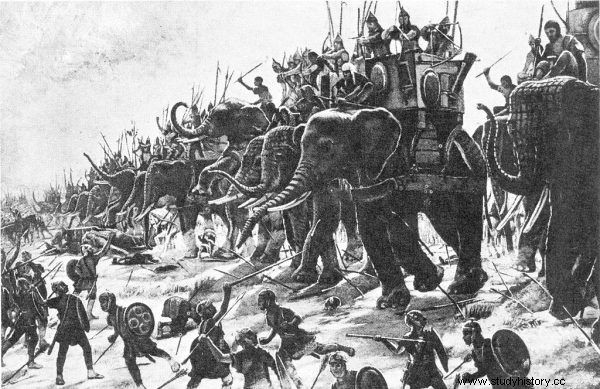
Henri-Paul Motte "The Battle of Zama" (1890). It was this clash that led to the defeat of Carthage. Hannibal in the summer of 202 BCE he lost in Africa to the forces of Scipio the Elder.
As a result, as Adrian Goldsworthy notes, "the average Roman commander appears to be at least as good as his average Carthaginian counterpart." It seems that in this respect, too, the republican system performed better than the "mercantile aristocracy" from overseas.
Inspiration:
The article was inspired by the latest book by Ben Kane, entitled Hannibal. Enemy of Rome , which was released by the Znak Horyzont publishing house.
Bibliography:
- Hubert Adamczyk, Carthage and Rome before the Punic Wars , Publishing House of the University of Wrocław 1978.
- Adrian Goldsworthy , The Fall of Carthage. The Punic Wars 265-146 BC , BC-Cassell 2003.
- Richard Miles, Carthage Must Be Destroyed. The Rise and Fall of an Ancient Mediterranean Civilization , Allen Lane 2010.
- The Cambridge Ancient History. Rome &the Mediterranean to 133 BC , eds. A. E. Astin et al., Cambridge University Press 2006.
- William McLaughlin, 4 Reasons Hannibal Couldn't Win the War for Carthage, War History Online 03/30/2016.
- Titus Livius, History from the foundation of the city of Rome. Choice , comp. Władysław Strzelecki, Ossolineum 2004.
